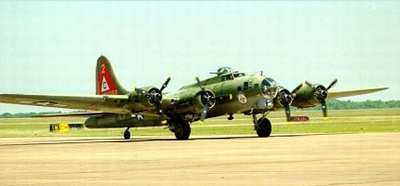Fri, Aug 31, 2012
First Lt. Harry Eck Was Aboard A B-17G That Went Down Over Germany
The remains of a U.S. serviceman, missing in action from World War II, have been identified and returned to his family for burial with full military honors, according to the Department of Defense POW/Missing Personnel Office (DPMO).

On Sept. 13, 1944, Army Air Forces 1st Lt. Harry W. Eck, of Minot Ward, ND, and and eight other crew members were on a B-17G Flying Fortress that crashed near Neustaedt-on-the- Werra, Germany. Only one of the crewmen is known to have successfully parachuted out of the aircraft before in crashed. The remaining eight crewmen were buried by German forces in a cemetery in Neustaedt. Following the war, U.S. Army Graves Registration personnel attempted to recover the remains of the eight men, but were only able to move the remains of one man to a U.S. military cemetery in Holland. In 1953, with access to eastern Germany restricted by the Soviet Union, the remains of the seven unaccounted for crewmen were declared Non-Recoverable.
In 1991, a German national who was digging a grave in the cemetery in Neustaedt, discovered a metal U.S. military identification tag and notified officials. Due to German burial law, Joint POW/MIA Accounting Command (JPAC) wasn’t granted access to the site until 2007 and excavated the location in 2008. The team recovered human remains and additional metal identification tags from three of the crewmembers.
To identify Eck’s remains, scientists from the JPAC used forensic identification tools and circumstantial evidence, including dental comparisons. Additionally, the Armed Forces DNA Identification Laboratory used mitochondrial DNA— which matched that of Eck’s cousin — in the identification of his remains.
Of the 16 million Americans who served in World War II, more than 400,000 died. At the end of the war, the U.S. government was unable to recover and identify approximately 79,000 Americans. Today, more than 73,000 are unaccounted for from the conflict.
(B-17G image from file)
More News
Airport Marking Aids Markings used on runway and taxiway surfaces to identify a specific runway, a runway threshold, a centerline, a hold line, etc. A runway should be marked in ac>[...]
"It is extremely difficult, if not impossible, for manned aircraft to see a drone while conducting crop-enhancing and other aerial applications at low altitudes and high speeds. We>[...]
Aero Linx: The Skyhawk Association The Skyhawk Association is a non-profit organization founded by former Skyhawk Pilots which is open to anyone with an affinity for the A-4 Skyhaw>[...]
“The T-54A benefits from an active Beechcraft King Air assembly line in Wichita, Kansas, where all required METS avionics and interior modifications are installed on the line>[...]
Aero Linx: Aerostar Owners Association The Association offers the Aerostar Owner a unique opportunity to tap an invaluable source of information concerning the care and feeding of >[...]
 ANN's Daily Aero-Term (04.28.24): Airport Marking Aids
ANN's Daily Aero-Term (04.28.24): Airport Marking Aids Aero-News: Quote of the Day (04.28.24)
Aero-News: Quote of the Day (04.28.24) ANN's Daily Aero-Linx (04.28.24)
ANN's Daily Aero-Linx (04.28.24) Aero-News: Quote of the Day (04.29.24)
Aero-News: Quote of the Day (04.29.24) ANN's Daily Aero-Linx (04.29.24)
ANN's Daily Aero-Linx (04.29.24)



